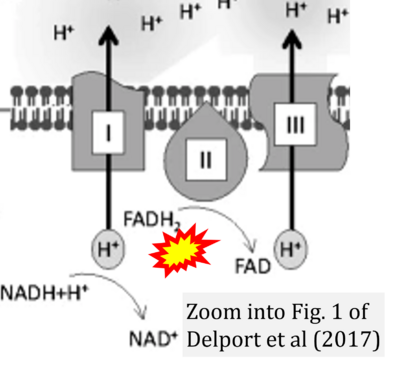Delport 2017 Metab Brain Dis
| Delport A, Harvey BH, Petzer A, Petzer JP (2017) Methylene blue and its analogues as antidepressant compounds. Metab Brain Dis 32:1357-82. https://doi.org/10.1007/s11011-017-0081-6 |
Delport A, Harvey BH, Petzer A, Petzer JP (2017) Metab Brain Dis
Abstract: Methylene Blue (MB) is considered to have diverse medical applications and is a well-described treatment for methemoglobinemias and ifosfamide-induced encephalopathy. In recent years the focus has shifted to MB as an antimalarial agent and as a potential treatment for neurodegenerative disorders such as Alzheimer's disease. Of interest are reports that MB possesses antidepressant and anxiolytic activity in pre-clinical models and has shown promise in clinical trials for schizophrenia and bipolar disorder. MB is a noteworthy inhibitor of monoamine oxidase A (MAO-A), which is a well-established target for antidepressant action. MB is also recognized as a non-selective inhibitor of nitric oxide synthase (NOS) and guanylate cyclase. Dysfunction of the nitric oxide (NO)-cyclic guanosine monophosphate (cGMP) cascade is strongly linked to the neurobiology of mood, anxiety and psychosis, while the inhibition of NOS and/or guanylate cyclase has been associated with an antidepressant response. This action of MB may contribute significantly to its psychotropic activity. However, these disorders are also characterised by mitochondrial dysfunction and redox imbalance. By acting as an alternative electron acceptor/donor MB restores mitochondrial function, improves neuronal energy production and inhibits the formation of superoxide, effects that also may contribute to its therapeutic activity. Using MB in depression co-morbid with neurodegenerative disorders, like Alzheimer's and Parkinson's disease, also represents a particularly relevant strategy. By considering their physicochemical and pharmacokinetic properties, analogues of MB may provide therapeutic potential as novel multi-target strategies in the treatment of depression. In addition, low MAO-A active analogues may provide equal or improved response with a lower risk of adverse effects.
• Bioblast editor: Gnaiger E
Correction: FADH2 and Complex II
- FADH2 is shown as the substrate feeding electrons into Complex II (CII). This is wrong and requires correction - for details see Gnaiger (2024).
- Gnaiger E (2024) Complex II ambiguities ― FADH2 in the electron transfer system. J Biol Chem 300:105470. https://doi.org/10.1016/j.jbc.2023.105470 - »Bioblast link«
Labels:
Enzyme: Complex II;succinate dehydrogenase


